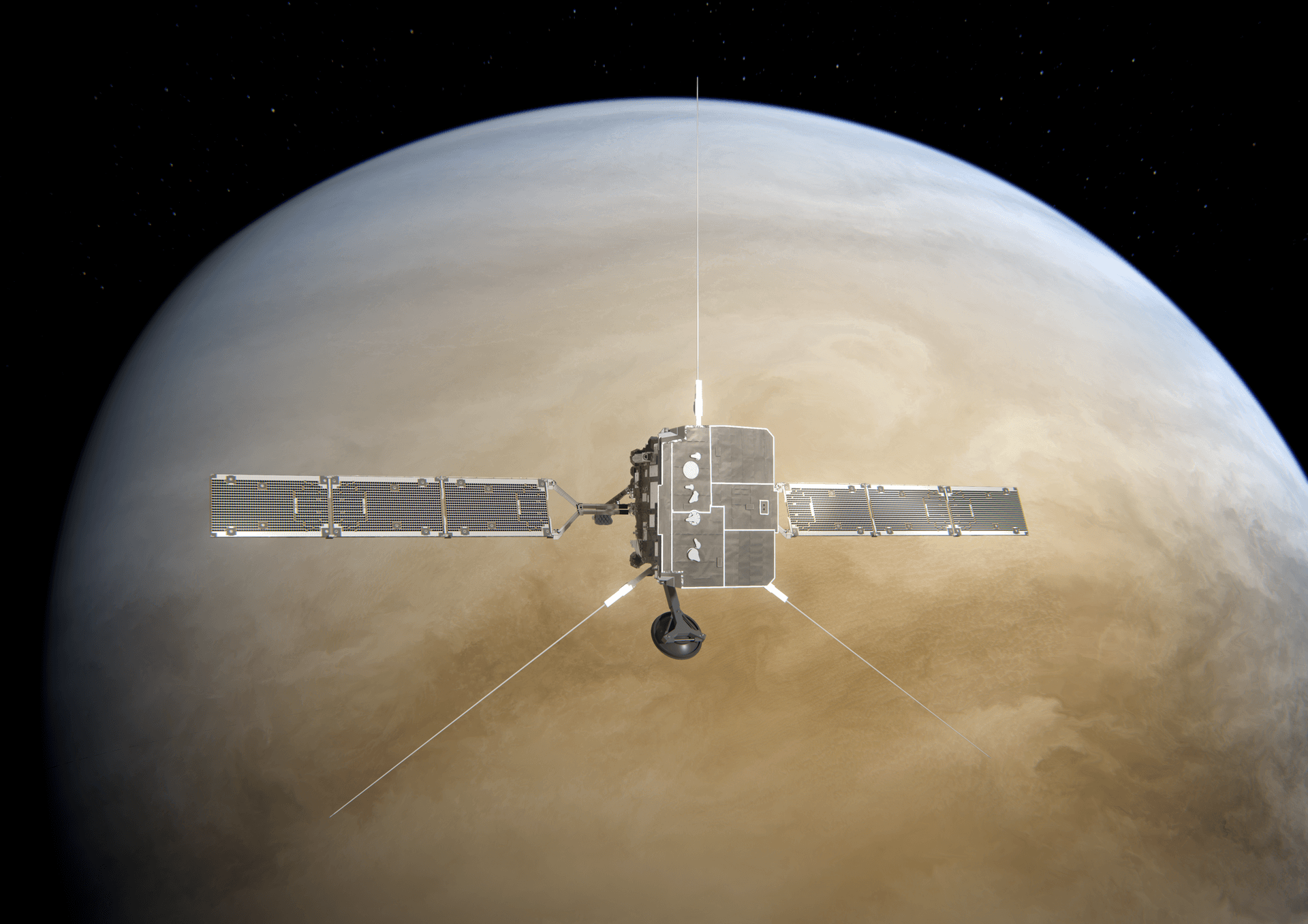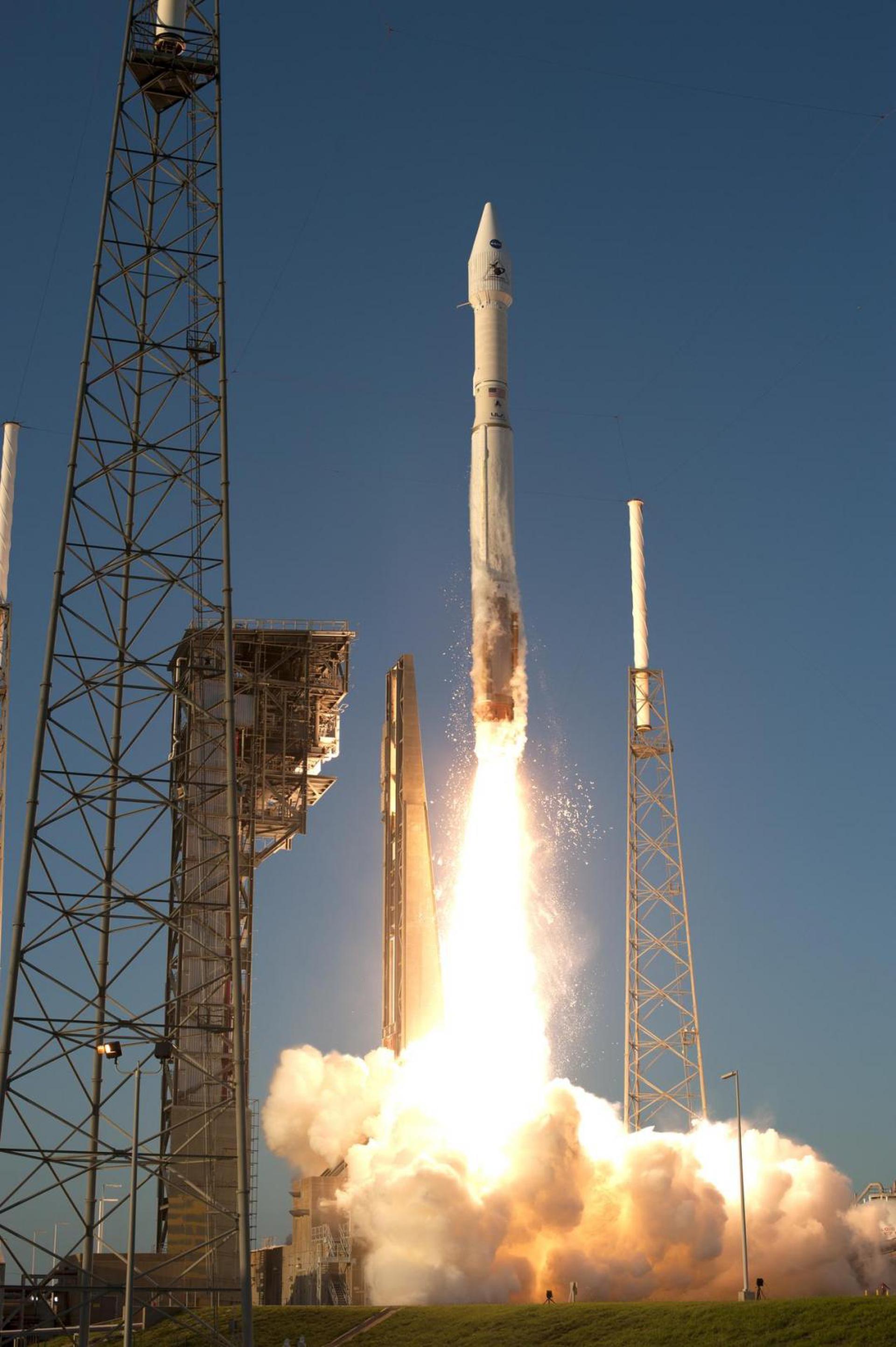
Flyby
Solar Orbiter Venus Flyby
Venus Atlas V 411 | Solar Orbiter
Solar Orbiter, a partnership between ESA and NASA, flew by Venus on 9 August with a closest approach of 7995 km at 04:42 UTC. Throughout its mission it makes repeated gravity assist flybys of Venus to get closer to the Sun, and to change its orbital inclination, boosting it out of the ecliptic plane, to get the best – and first – views of the Sun’s poles.
Related Information
Atlas V 411 | Solar Orbiter
United Launch Alliance | United States of AmericaCape Canaveral SFS, FL, USA
Feb. 10, 2020, 4:03 a.m.
Status: Launch Successful
Mission:
Solar Orbiter is a joint ESA/NASA mission dedicated to solar and heliospheric physics. It will be used to examine how the Sun creates and controls the heliosphere, the vast bubble of charged particles blown by the solar wind into the interstellar medium. The spacecraft will combine in situ and remote sensing observations to gain new information about the solar wind, the heliospheric magnetic field, solar energetic particles, transient interplanetary disturbances and the Sun's magnetic field. Instruments include: * Solar Wind Analyser (SWA) * Energetic Particle Detector (EPD) * Magnetometer (MAG) * Radio and Plasma Wave analyser (RPW) * Polarimetric and Helioseismic Imager (PHI) * Extreme Ultraviolet Imager (EUI) * Spectral Imaging of the Coronal Environment (SPICE) * Spectrometer Telescope for Imaging X-rays (STIX) * Coronagraph (Metis) While mission is not intended to get as close to the Sun as Parker Solar Probe, it's designed to coordinate observations and has different set of instruments. Main mission starts after one and only Earth flyby in November 2021, and lasts until Dec 2026 when it enters extended phase. During the mission, Solar Orbiter will get through numerous Venus gravity assists, and its trajectory will be highly inclined allowing direct observations of Sun's poles.
Heliocentric N/A #SolOElectron
Symphony In The Stars
Rocket Lab Launch Complex 1B - Rocket Lab Launch Complex 1, Mahia Peninsula, New Zealand'Symphony In The Stars' is the first of two dedicated missions on Electron to deploy a single spacecraft to a 650km circular Earth orbit for a confid…
Falcon 9
Starlink Group 10-34
Space Launch Complex 40 - Cape Canaveral SFS, FL, USAA batch of 27 satellites for the Starlink mega-constellation - SpaceX's project for space-based Internet communication system.
Electron
Get The Hawk Outta Here (4x HawkEye 360)
Rocket Lab Launch Complex 1A - Rocket Lab Launch Complex 1, Mahia Peninsula, New ZealandHawkEye 360 is a a space-based civil global intelligence satellite network using radio frequency (RF) technology to help monitor transportation acros…
Falcon 9
Starlink Group 10-16
Space Launch Complex 40 - Cape Canaveral SFS, FL, USAA batch of 27 satellites for the Starlink mega-constellation - SpaceX's project for space-based Internet communication system.
Falcon 9
Axiom Space Mission 4
Launch Complex 39A - Kennedy Space Center, FL, USAThis is a Crew Dragon flight for a private company Axiom Space. The mission will carry a professionally trained commander alongside three private ast…
Falcon 9
Transporter 14 (Dedicated SSO Rideshare)
Space Launch Complex 4E - Vandenberg SFB, CA, USADedicated rideshare flight to a sun-synchronous orbit with dozens of small microsatellites and nanosatellites for commercial and government customers.
Atlas V 551
Project Kuiper (KA-02)
Space Launch Complex 41 - Cape Canaveral SFS, FL, USAProject Kuiper is a mega constellation of satellites in Low Earth Orbit that will offer broadband internet access, this constellation will be managed…
Falcon 9
Starlink Group 10-23
Space Launch Complex 40 - Cape Canaveral SFS, FL, USAA batch of 27 satellites for the Starlink mega-constellation - SpaceX's project for space-based Internet communication system.
Long March 3
ChinaSat 9C
Launch Complex 2 (LC-2) - Xichang Satellite Launch Center, People's Republic of ChinaKu- and Ka-band geostationary communication satellite for China Satcom at 92.2° East, replacing ChinaSat 9.
Angara A5/Briz-M
Kosmos 2589
35/1 - Plesetsk Cosmodrome, Russian FederationUnidentified payload for the Russian military.


